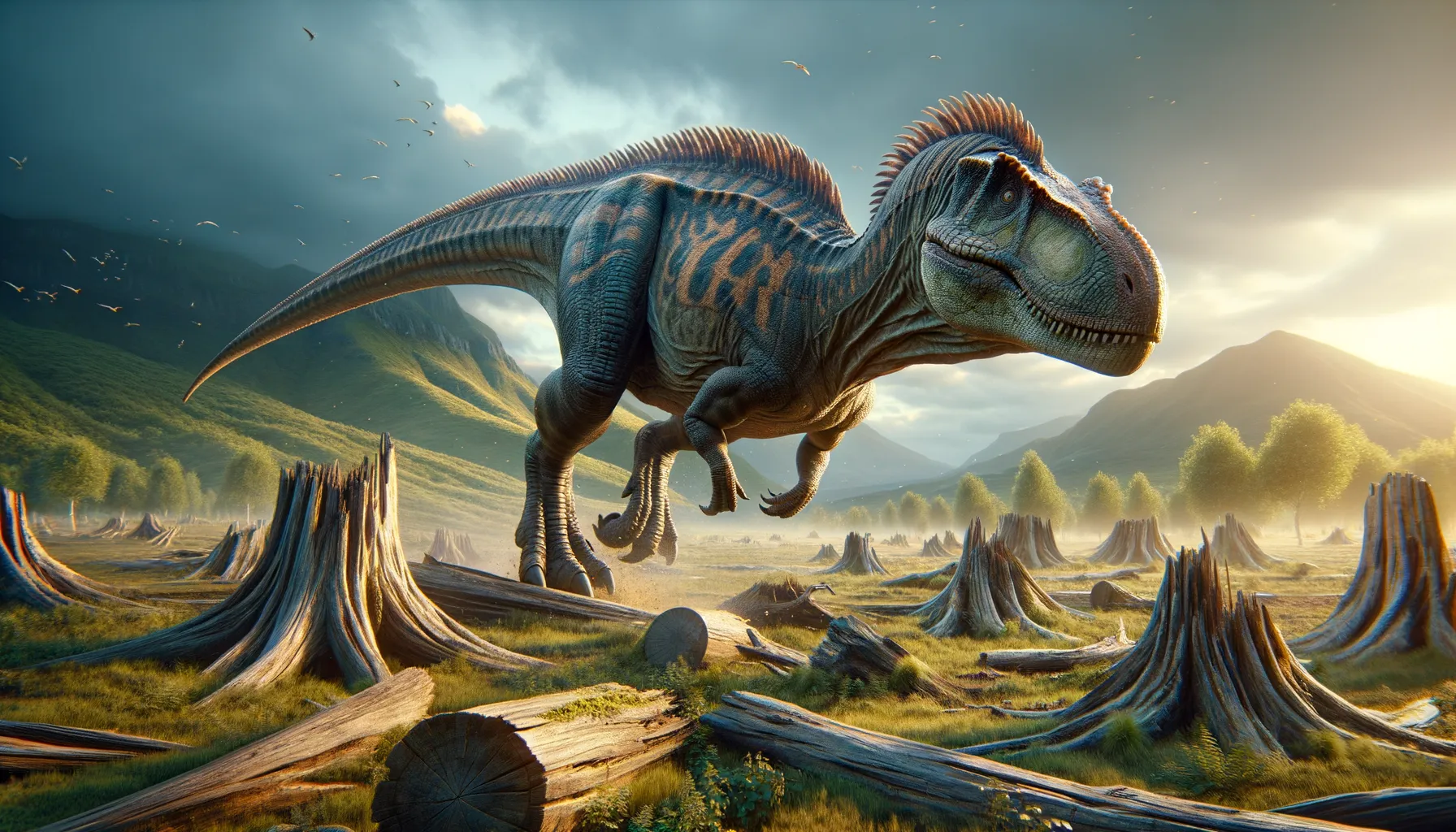
Hoplosaurus
Armored beast of the Jurassic landscape.
Period
Jurassic
Length
Measured about 7 meters long.
Height
Around 3 meters tall.
Weight
Approximately 2 tons.
Hoplosaurus was a formidable dinosaur with distinct armor-like features and a robust build, thriving during the Jurassic period. It was known for its swift movements and ability to adapt to a variety of environments. As a herbivorous creature, its daily life was a constant balance between grazing and avoiding predators. This dinosaur played a vital role in its ecosystem, contributing to the biodiversity of its time.
Diet
Hoplosaurus was primarily a herbivore. It fed on a variety of vegetation, including ferns and low-lying plants, which were abundant during the Jurassic period.
Hunting
Hoplosaurus did not engage in hunting as it was a herbivore. Instead, it foraged for food, using its keen senses to locate abundant vegetation.
Environmental challenges
Hoplosaurus faced various environmental challenges, such as fluctuations in climate and the presence of predators. It had to navigate dynamic landscapes that sometimes underwent sudden geological changes. Adapting to these conditions required resilience and resourcefulness, especially during periods of scarcity. Competition for resources, particularly in denser habitats, added another layer of challenge to its survival.
Speed
Average speed, moderately fast for its size.
Lifespan
Estimated to live around 20-30 years.
First discovery
Remains discovered in the late 19th century.
Fun Facts
- Hoplosaurus was a dinosaur known for its impressive body armor, which protected it from predators.
- This dinosaur lived during the late Cretaceous period, roughly 70 million years ago.
- Hoplosaurus was a herbivore, meaning it primarily ate plants and vegetation.
- It is believed that Hoplosaurus could grow up to 20 feet long, making it a formidable presence in its ecosystem.
- The name 'Hoplosaurus' means 'armed lizard,' referring to its distinctive armor.
- Fossils of Hoplosaurus have been found in parts of North America.
- Despite its size and armor, Hoplosaurus was likely a peaceful creature, avoiding confrontation when possible.
Growth and Development
Hoplosaurus hatched from eggs, with young dinosaurs relying on rapid growth to reach maturity. Juveniles had distinct developmental stages, gradually acquiring their signature armory as they aged. Their growth patterns were influenced by factors such as nutrition and environmental conditions. Understanding its embryological development provides insights into its evolutionary adaptations.
Habitat
Hoplosaurus thrived in forested regions abundant with ferns and other low vegetation. It favored areas that provided ample food and shelter from predators. Its habitat was characterized by varied terrain, including hills and open plains. The availability of water sources was also crucial for its survival, ensuring sustenance and hydration.
Interaction with other species
Hoplosaurus coexisted with various species, both herbivores and carnivores. It often moved in herds for protection, which reduced the risks of predation. Its interactions were generally peaceful with other herbivores, focusing on mutual survival. However, encounters with predators required defensive strategies to safeguard its group.
Natural lifespan
Hoplosaurus naturally lived up to 30 years in the wild.
Reproduction
Hoplosaurus reproduced by laying eggs, usually in small clutches. Females selected secure locations for nesting to ensure the safety of their young. Parental care was minimal, with hatchlings being precocial and independent soon after birth. This reproductive strategy allowed for rapid population recovery in favorable conditions.
Social behaviour
Hoplosaurus exhibited social behavior typical of herding animals, providing protection against predators. These groups were usually led by experienced individuals guiding the herd to food and safety. Social structures helped in maintaining a stable and cohesive unit. Communication within the group relied on vocalizations and physical displays.
Fossil locations
Fossil remains of Hoplosaurus have been predominantly found in East Asia, particularly in Japan and China. These locations provide valuable insights into the dinosaur's distribution during the Jurassic period. The well-preserved specimens help in understanding its anatomy and ecological role. Ongoing excavations continue to uncover new evidence about its life and environment.
